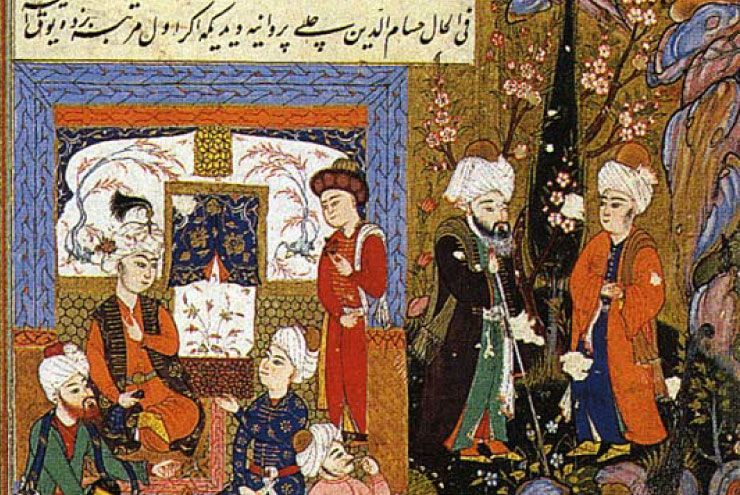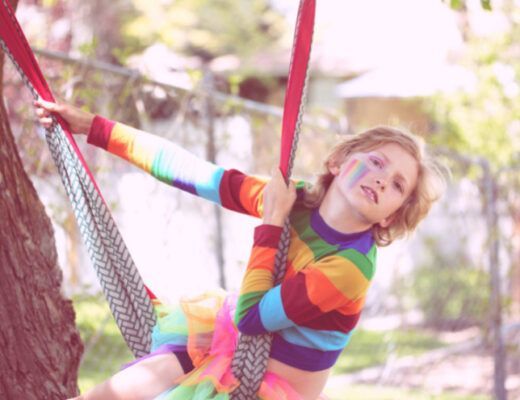By Kelly M. Marshall
I never set out to walk the path of a teacher. When I committed to yoga as my primary spiritual discipline, I was an anxious, depressed, dumpster fire of a human being. My relationship with myself and any changes I made before that day were motivated by shame, fear, and perfectionism. I wore myself out trying to fit the mold of what I thought a worthy and good human being looked like.
It was through the path of yoga that I realized the inherent wisdom inside of me. Through rigorous daily practice and adherence to the philosophies of yoga, I found that, when I got still and quiet, my intuition and a sense of deep inner understanding and self-trust overpowered the constant anxious chatter of my brain. I discovered who I was underneath the turbulent storm of anxiety, depression, and gender dysphoria.
Eventually, I realized that I was my own best teacher and healer. And as I progressed on my journey and expanded my knowledge and personal understanding of yoga, I started to learn how to be a teacher to others. Not by claiming that title, but by being invited into that role with others.
The teachers that trained me created a container of empowerment by showing me the tools and techniques of yoga, but they themselves did not have a deeply personal relationship with me. They were a teacher, but they weren’t my teacher. And due to the lineage aspects of yoga, I felt as if I was missing something vital. Where was my “guru?”
“I looked in Temples, Churches, and Mosques. I found the divine in my heart.” —Rumi
As I soon discovered, Rumi was onto something very real.
Upon listening to a friend express pain over a conflict they were having with one of their spiritual teachers, I realized with a pang that I couldn’t sympathize at all.
I never let anyone get close enough to hold that kind of power over me, let alone someone who could be called a spiritual teacher. And the few relationships that came close were very boundaried and very brief. They existed in order to convey a message, a tool, a technique, or a philosophy, and dissolved once the transaction was completed.
It was through the path of a one-to-one relationship that I’ve finally come to understand that every single person I meet is a spiritual teacher.
Prior to taking trips to Nepal and Ecuador (where I shared deeply spiritual moments with multiple people), the closest I’d come to having a real spiritual teacher came in the form of my romantic partners. In that sense, we’d create a spiritual community of two, each teaching the other. This arrangement created a crucible of quantum growth, but usually at the detriment or destruction of the relationship. We’d jettison old trauma, old belief systems, and anything else that didn’t serve either one of us, but we’d often end up throwing the baby of the relationship out with the bathwater. Criticism ran rampant.
One of the most moving spiritual experiences I’d ever had was watching my unity candle immolate to ashes while crying with my ex-wife during our hand-parting ritual, which symbolized the severing of our symbolic ties to one another.
In the aftermath of my divorce, I realized a “church of two” put too much pressure on one relationship, let alone a romantic one. I came from a family that wrote the book on codependent enmeshment, so it made sense that I’d apply those same dynamics to my own relationships. But as anyone who’s walked that path can tell you, those kinds of relationships are destructive and dysfunctional—they don’t work for long, although they can be very exciting, explosive, and growth-inducing in the moment.
I’ve had to let go of my comfort zone of sharing my spiritual growth and practices with exactly one other person. This has required me to get uncomfortably vulnerable with other people.
My trip to Nepal was simultaneously one of the most beautiful experiences I’ve ever had in my life and one of the most heart-rending and uncomfortable. I’d had a privileged, sanitized fantasy of what life would be like over there, on top of a lot of fantasies about what it’d be like to travel in a developing country with five other people who were little more than strangers. I was shaken out of my first-world reverie and pressed to deconstruct the dissonance between who or what you think someone or someplace is and who/what turns out to be the truth.
I will always prefer the uncomfortable truth to the sanitized fantasy, in the end. But there is the uncomfortable messiness and liminal nausea that comes when your illusions topple down, like a tower of cards fluttering in the wind. And that emotional experience was a constant companion every day of my trip to Nepal. The culture shock, the poverty, the sheer magnitude of everything I took for granted power-washed my psyche, and I found multiple moments of “guru-ness” with my traveling companions, with the Nepalese people, and in the solitude I often took, panting and dizzy with altitude sickness and staring at the Annapurna mountains.
Spiritual community can be a place of incredible healing, but it can also be a place of feeling judged, ostracized, and othered.
The first hurdle I had to face was the fact that other people have their own spiritual paths built on value systems and judgements that they create around what’s “good” and “bad.” I first experienced this in the yoga community with virtue signaling and judgments about communication styles, using profanity, smoking or drinking, body shape, diet, practice lineages, and what is and what isn’t considered “real yoga.” This is the tip of the iceberg, but you get the idea.
I immediately bonded with those in my yoga community who didn’t fit the virtuous and charismatic thin, white, blonde, Instagram-influencer mold. I was drawn to queer yogis with bigger bodies, foul-mouthed practitioners with tattoos and checkered pasts, whose favored mudra was flipping the bird. My people struggled with addiction, mental illness, with being othered and ignored in the yoga community, the outcast practitioners and stalwart weirdos who’d dragged themselves out of the depths of rock-bottom and found some semblance of sanity and peace in yoga.
I loved the rebels who balked the status quo, asked inconvenient questions, and wanted yoga to be ever more accessible, more aware, and less problematic. I loved the practitioners who didn’t subscribe to the “positive vibes only” mentality of spiritual bypass, who didn’t believe that literally everything happens for a reason, that not everything is a “sign,” and that sometimes shit is hard, and weird, and painful, just because. That sometimes we are the best spiritual teachers for ourselves and others when we allow ourselves to be really messy and human, when we show how flawed and fucked up we are, when we let ourselves feel okay about making mistakes. And in the aftermath, in how we respond to and redress those mistakes.
There’s something about the messy and challenging intimacy of person-to-person contact that meets my deep primal need for spiritual belonging. Finding a feeling of belonging in myself and through that, my community, has far surpassed my search for a single spiritual teacher. It’s been a long and ever-evolving search of finding my sangha, my spiritual community, amongst people who understand that sometimes being an outsider is the best way to understand who you are and where you belong.







